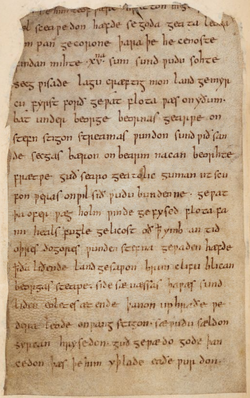| "On Translating Beowulf" | |
|---|---|
| Short story by J. R. R. Tolkien Edited by Christopher Tolkien | |
 | |
| Country | United Kingdom |
| Language | English |
| Genre(s) | Essay |
| Publication | |
| Published in | Beowulf and the Finnesburg Fragment |
| Publisher | John R. Clark Hall |
| Publication date | 1940 |
"On Translating Beowulf" is an essay by J. R. R. Tolkien which discusses the difficulties faced by anyone attempting to translate the Old English heroic-elegiac poem Beowulf into modern English. It was first published in 1940 as a preface contributed by Tolkien to a translation of Old English poetry; it was first published as an essay under its current name in the 1983 collection The Monsters and the Critics, and Other Essays.
In the essay, Tolkien explains the difficulty of translating individual words from Old English, noting that a word like eacen ('large', 'strong', 'supernaturally powerful') cannot readily be translated by the same word in each case. He notes the problem of translating poetic kennings such as sundwudu ('flood-timber', i.e. 'ship') and that the language chosen by the poet was already archaic at that moment. He explains that such terms had echoes and connotations of another world, an "unrecapturable magic".[1]
The essay describes Old English metre, with each line in two opposed halves. The stressed syllables in each half contained alliterating sounds in six possible patterns, which Tolkien illustrates using modern English. Rhyme is used only for special effects, such as to imitate waves beating on a shore. The essay ends with the observation that the whole poem is itself in two opposed halves, covering "Youth + Age; he rose – fell."[2]
Critics note that Tolkien attempted and sometimes failed to follow the rules he laid down in the essay in his own alliterative verse, in his own translations, and indeed in the poetry in his narrative fiction such as The Lord of the Rings.
- ^ Tolkien 1997, p. 60.
- ^ Tolkien 1997, p. 71.
